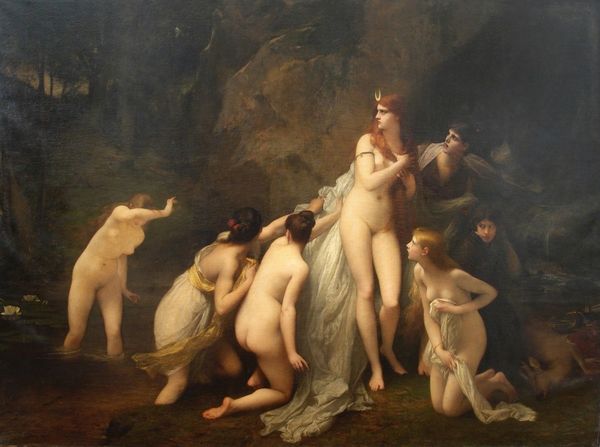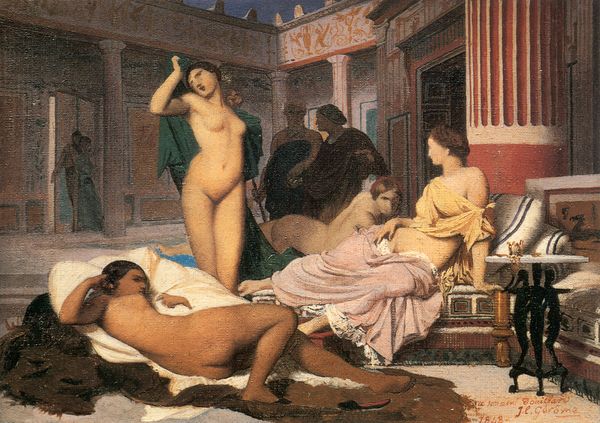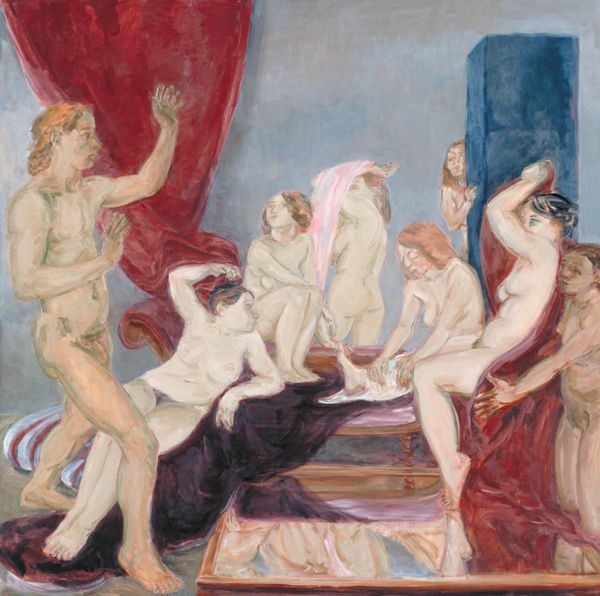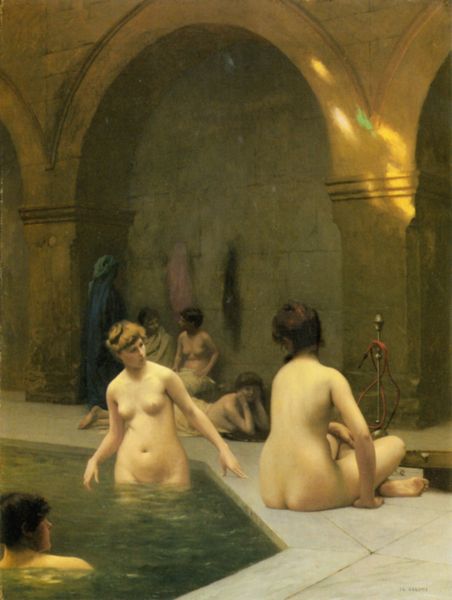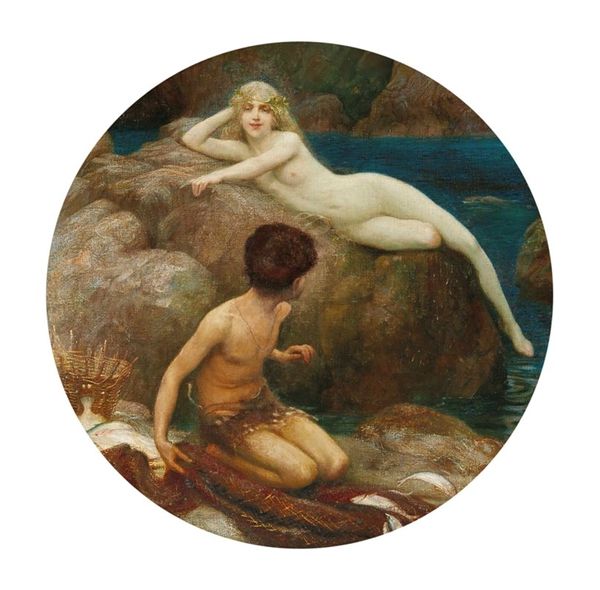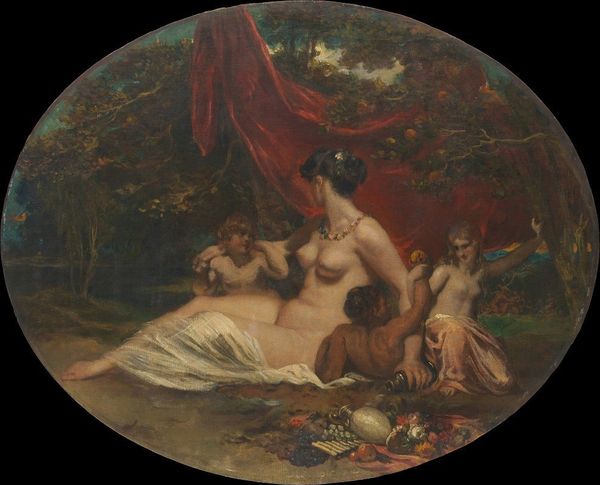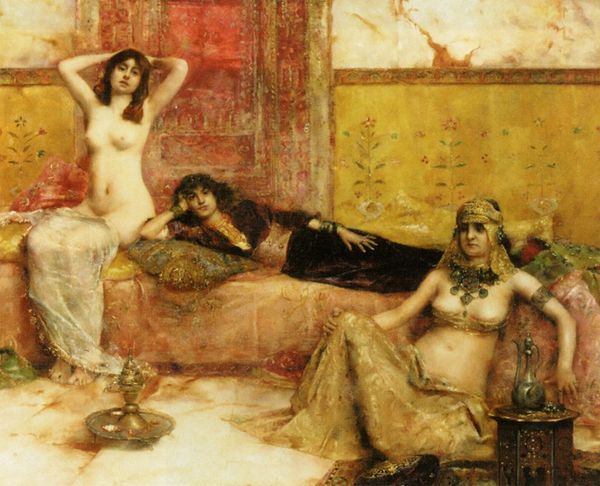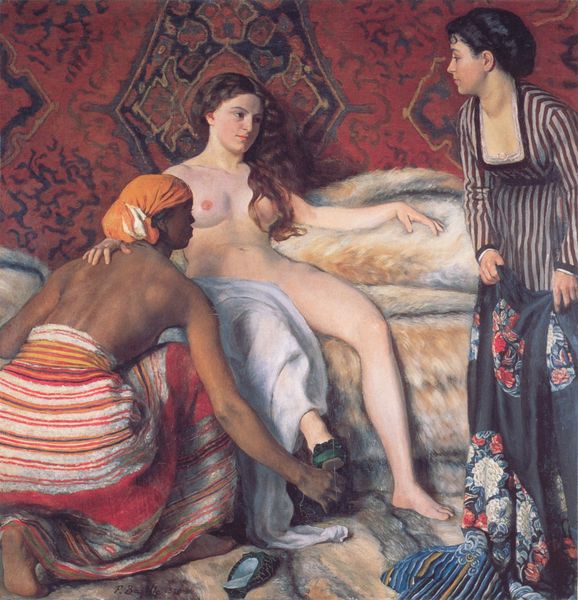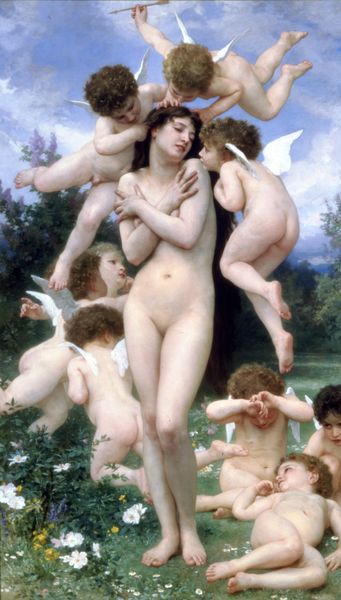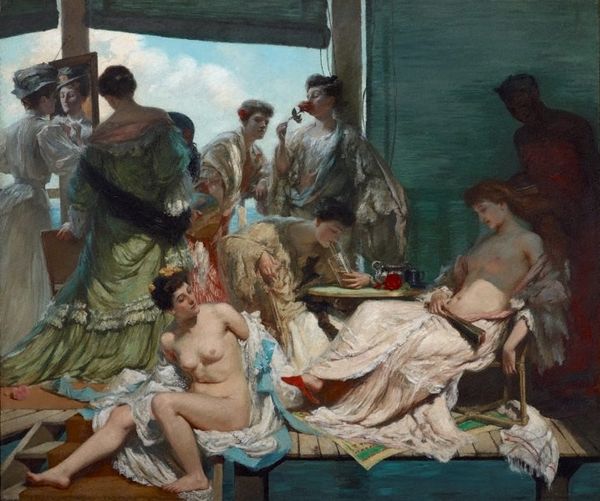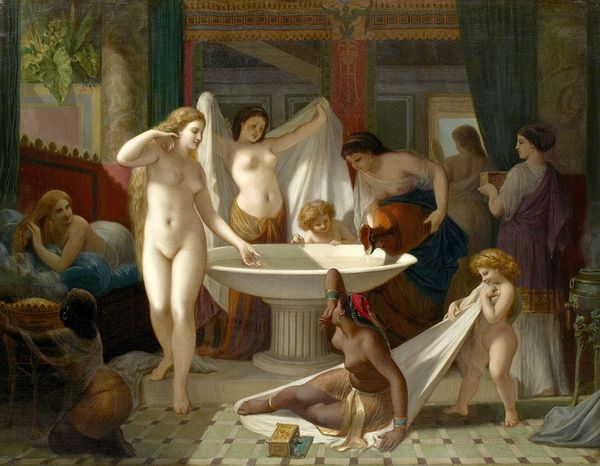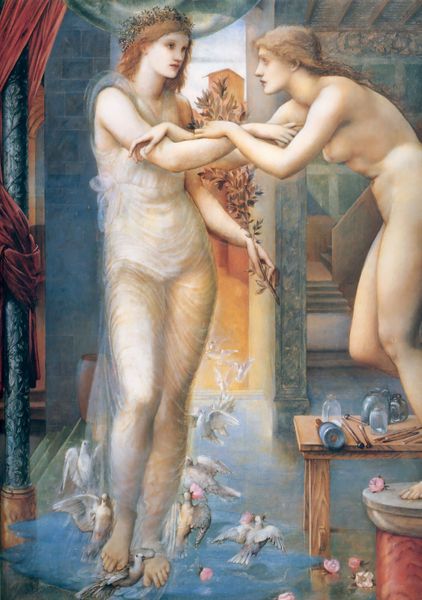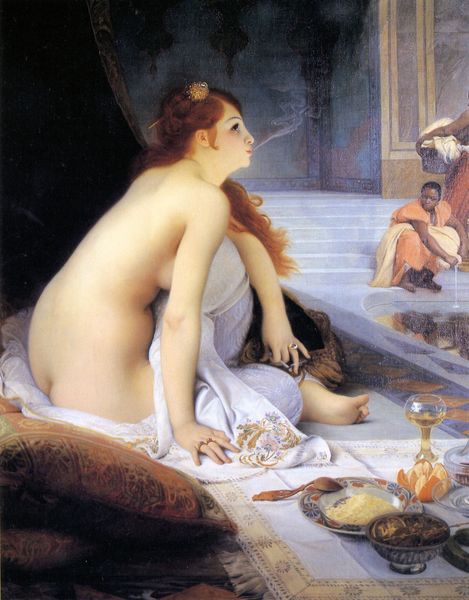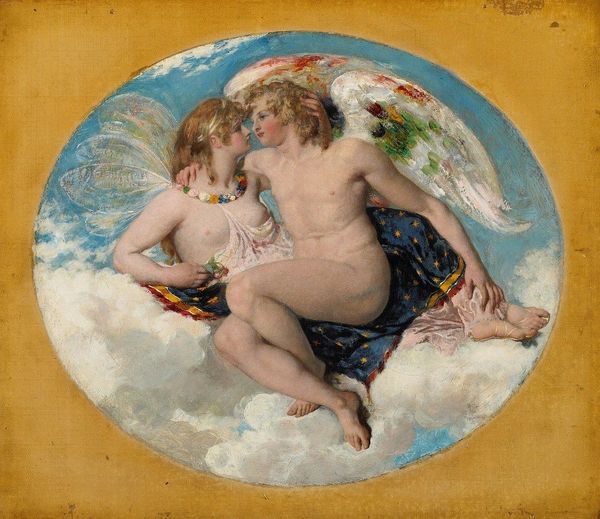
Copyright: Public domain
Jean-Auguste-Dominique Ingres painted "The Turkish Bath," now hanging in the Louvre in Paris, using oil on canvas. The circular composition is dominated by nude female figures, referencing the exoticized vision of the Orient popular in 19th-century European art. The motif of the odalisque, or female slave in a harem, carries with it centuries of complex history and cultural exchange. We can trace its lineage back to classical depictions of nymphs and goddesses, figures of fertility and sensuality. Yet here, the women are gathered in an enclosed space, evoking both luxury and confinement. Their nudity, a symbol of vulnerability and availability, speaks to the voyeuristic gaze of the European male. Observe the woman playing the stringed instrument: she has a striking resemblance to Ingres’s earlier painting, the Valpinçon Bather, her back turned to the viewer. This repetition underscores how images recur and transform, embodying collective memories. The bath, a place of cleansing, also becomes a site where these complex narratives converge.
Comments
No comments
Be the first to comment and join the conversation on the ultimate creative platform.
